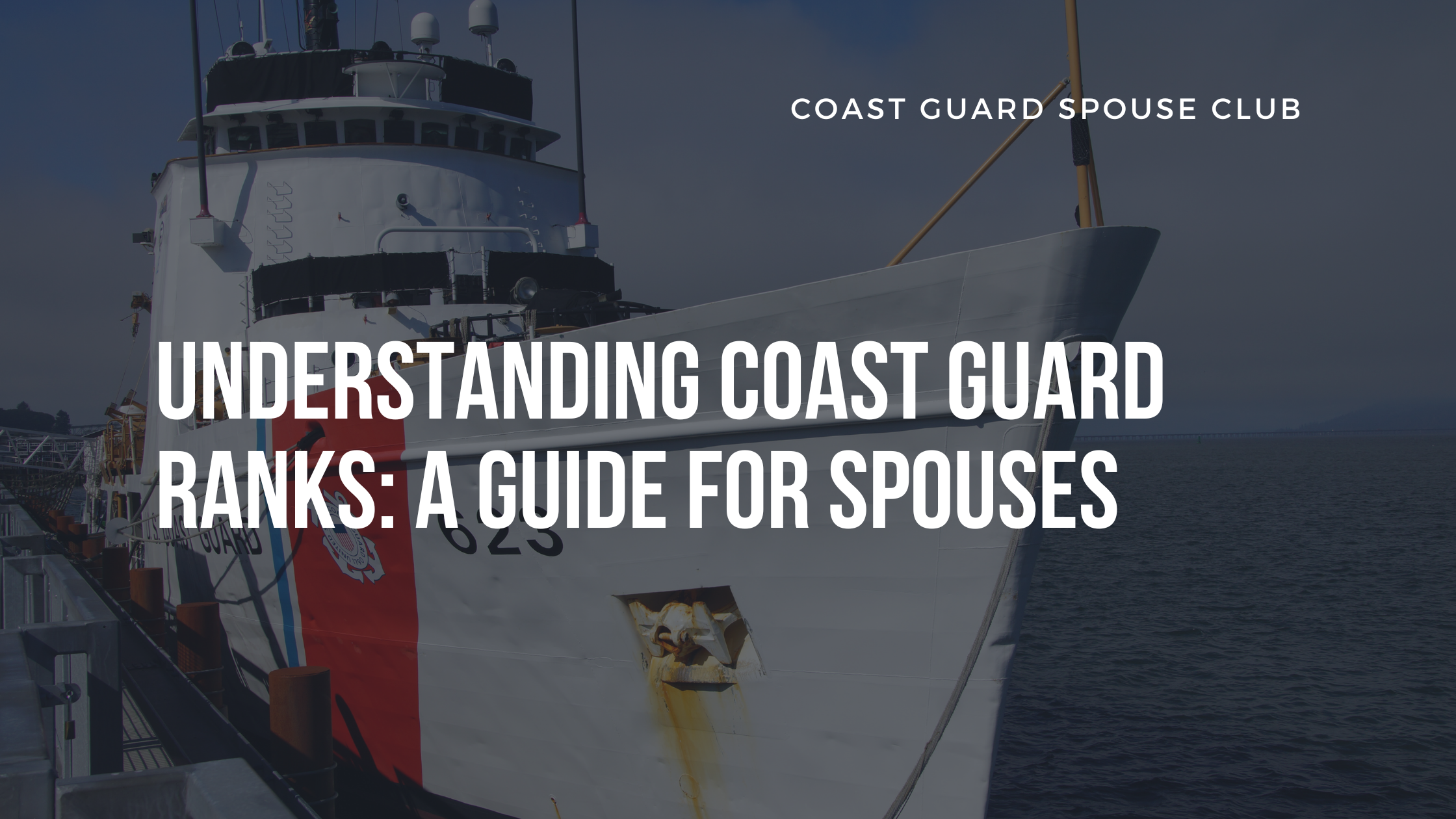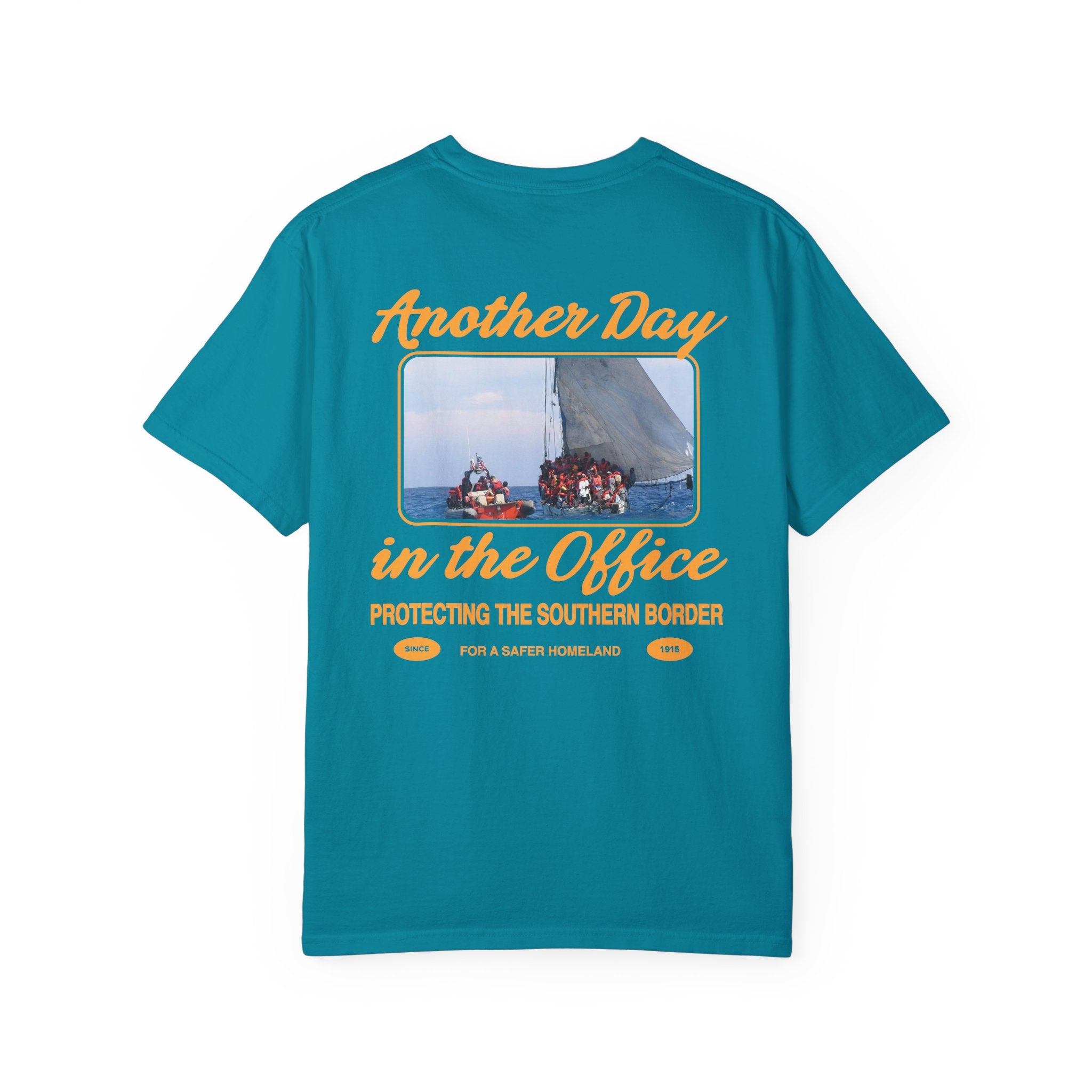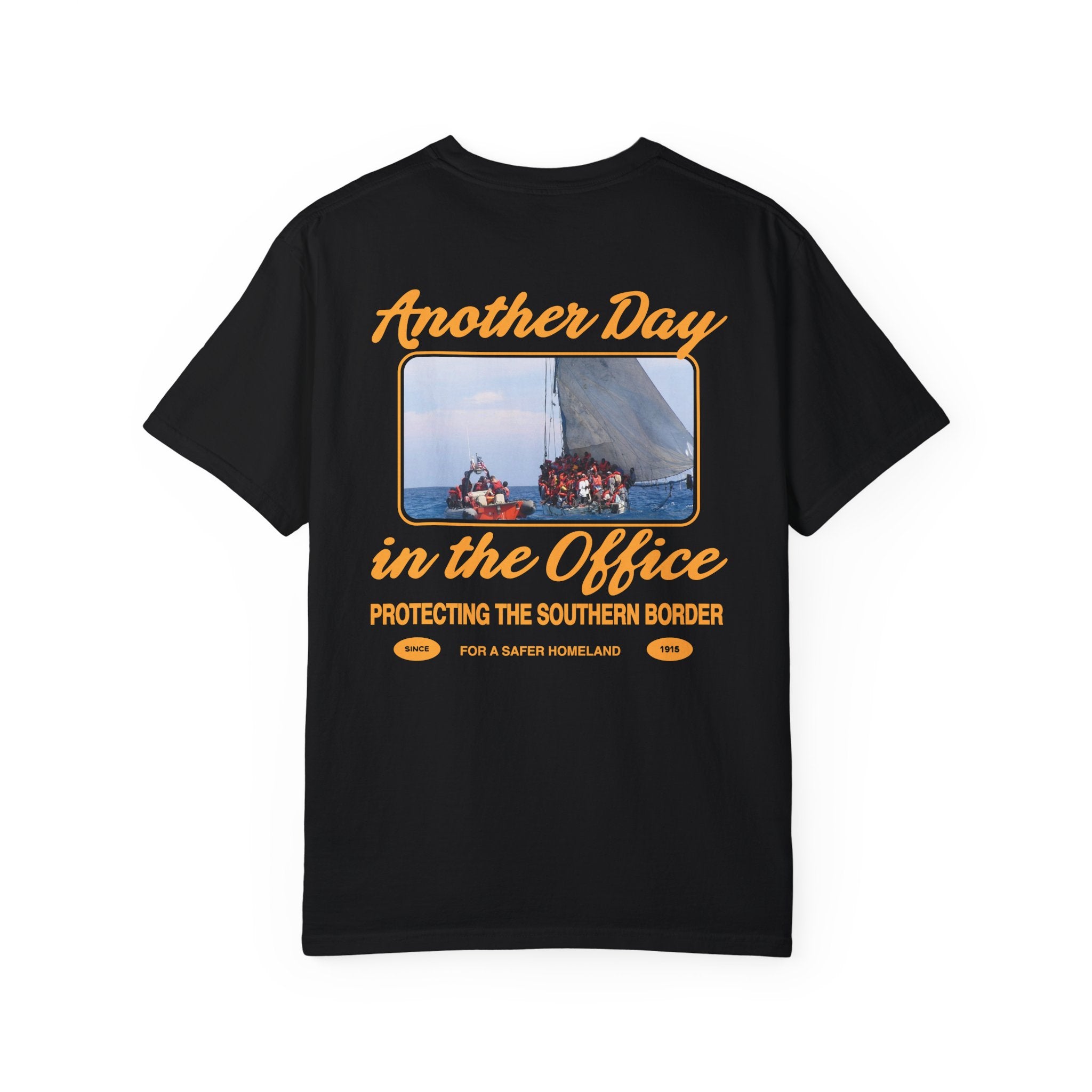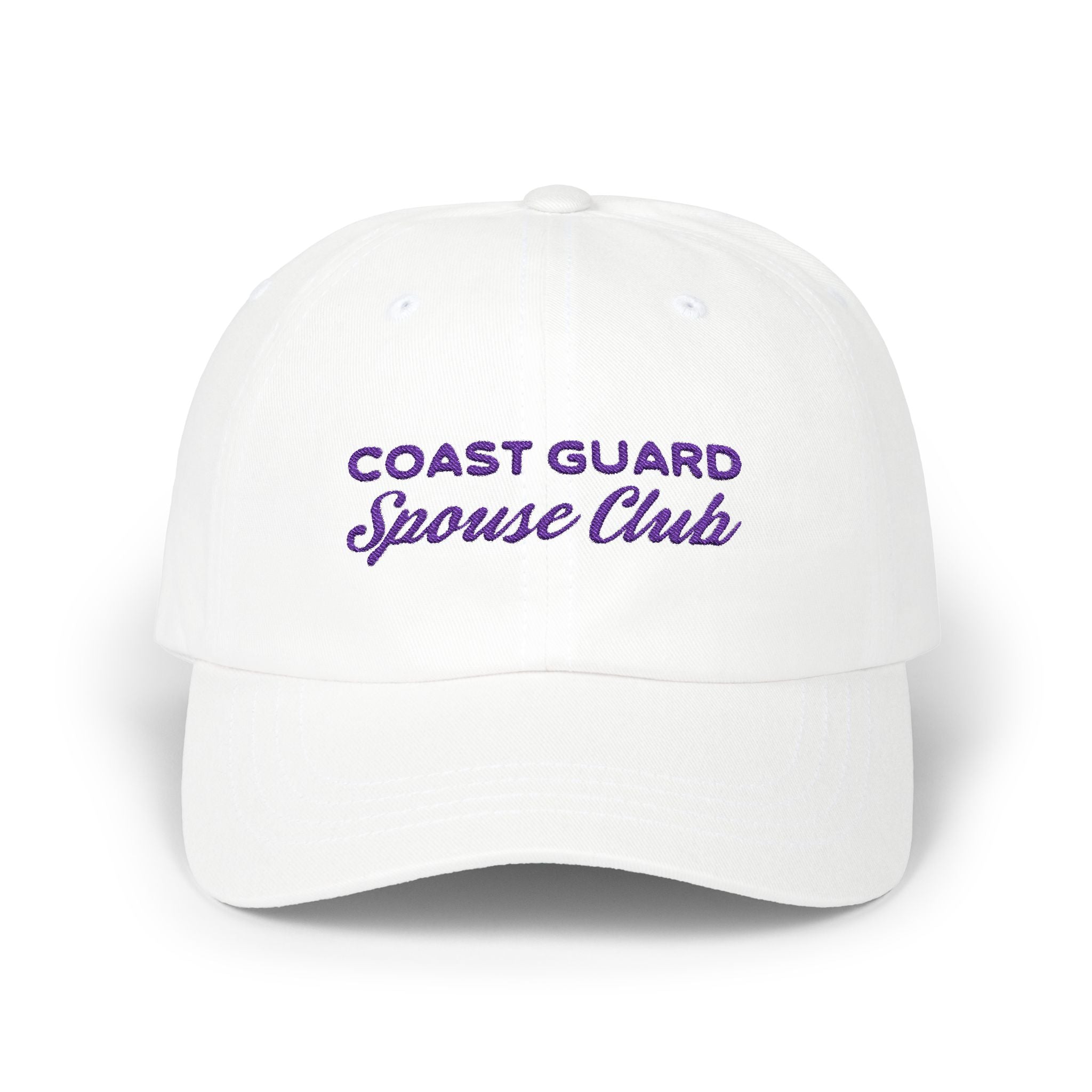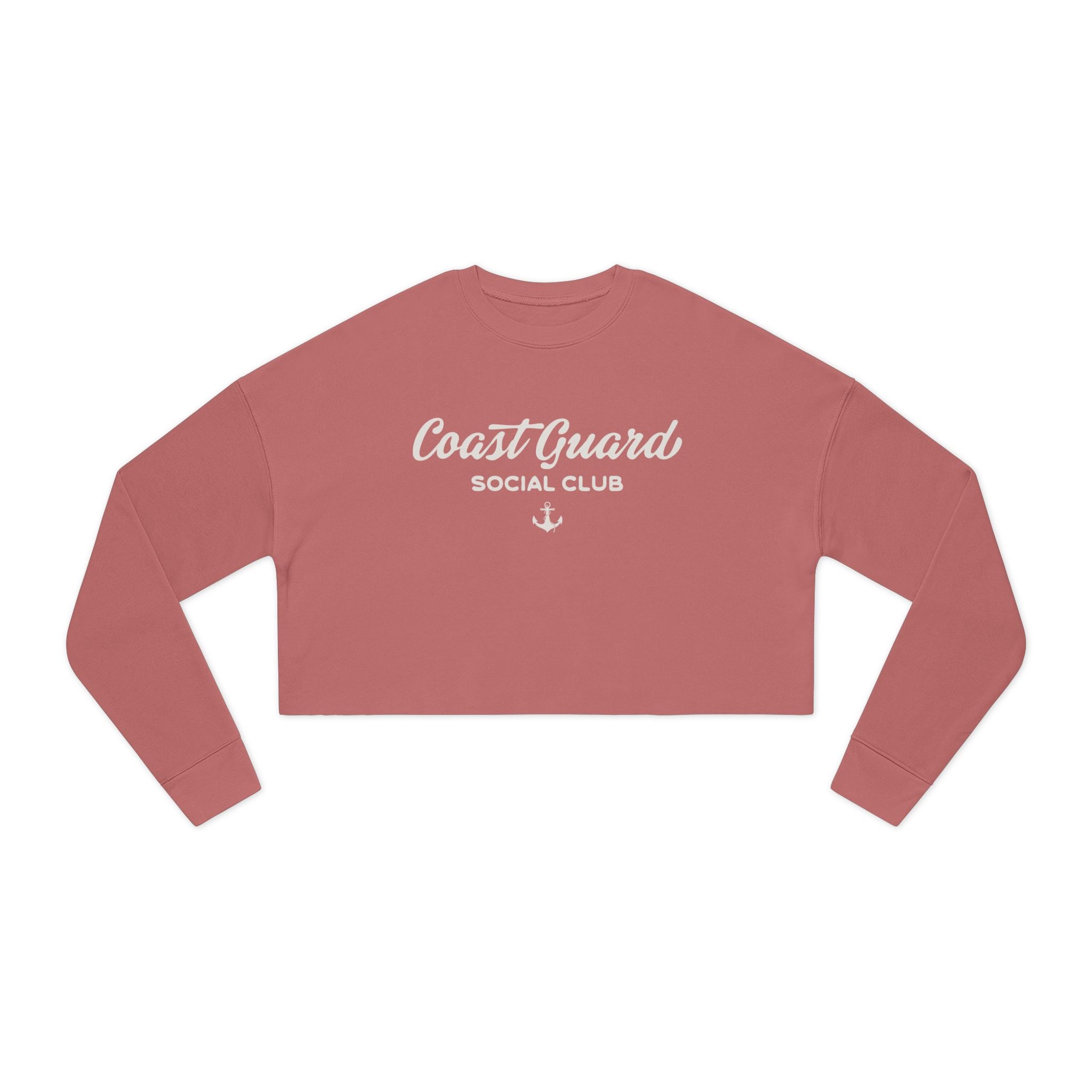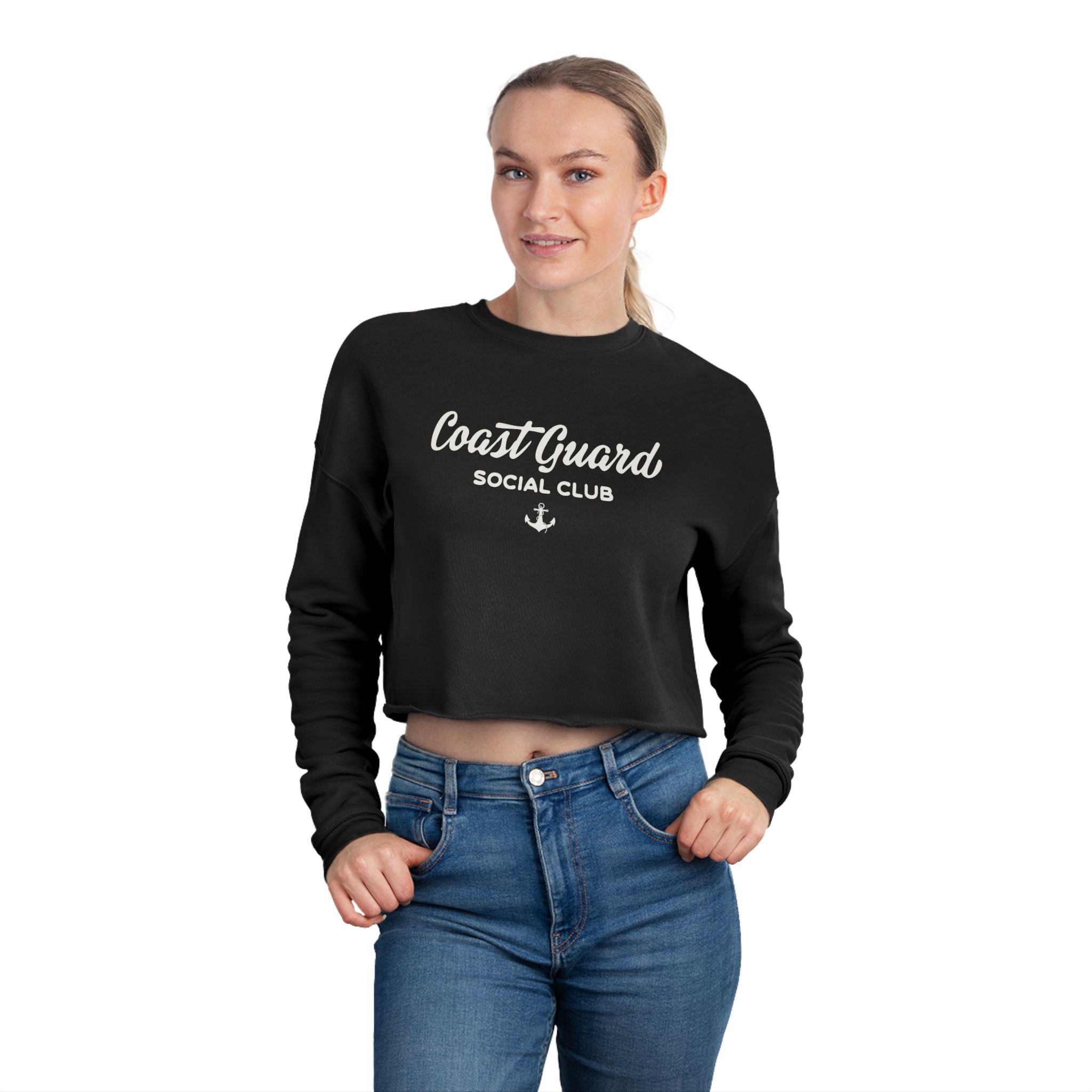Oct 23, 2024
Understanding Coast Guard Ranks: A Guide for Spouses
Navigating the intricacies of Coast Guard life can be challenging, especially when it comes to understanding the rank structure and the responsibilities associated with each level. As spouses, having a clear grasp of these ranks not only helps us appreciate the roles our loved ones play but also fosters a deeper connection to the Coast Guard community. In this guide, we’ll break down the Coast Guard’s rank structure, outline typical responsibilities at each level, and discuss how our spouse club embraces inclusivity beyond traditional rank distinctions.
Enlisted Ranks
Enlisted personnel form the backbone of the Coast Guard, executing missions and ensuring operational readiness. The enlisted ranks are as follows:
| Pay Grade | Rank | Typical Responsibilities |
|
E-1 |
Seaman Recruit (SR) |
Undergoes basic training; learns fundamental skills and protocols. |
|
E-2 |
Seaman Apprentice (SA) |
Continues training; begins to take on basic duties under supervision. |
|
E-3 |
Seaman (SN) |
Performs general duties; may start specializing in a particular field. |
|
E-4 |
Petty Officer Third Class (PO3) |
Leads small teams; responsible for specific technical tasks; begins to develop leadership skills. |
|
E-5 |
Petty Officer Second Class (PO2) |
Supervises larger teams; manages more complex tasks; mentors junior personnel. |
|
E-6 |
Petty Officer First Class (PO1) |
Leads divisions; oversees operations; ensures team readiness and training. |
|
E-7 |
Chief Petty Officer (CPO) |
Senior technical expert; advises officers; manages personnel and resources. |
|
E-8 |
Senior Chief Petty Officer (SCPO) |
Assumes higher leadership roles; oversees multiple divisions; strategic planning. |
| E-9 |
Master Chief Petty Officer (MCPO) |
Highest enlisted rank; senior advisor to command; shapes policy and procedures. |
Note: The Coast Guard also has specialized ranks at the E-9 level, such as the Master Chief Petty Officer of the Coast Guard (MCPOCG), who serves as the senior enlisted advisor to the Commandant.
Warrant Officer Ranks
Warrant Officers are technical specialists who bridge the gap between enlisted personnel and commissioned officers. They are selected from the senior enlisted ranks based on their expertise.
|
Pay Grade |
Rank |
Typical Responsibilities |
|
O-2 |
Chief Warrant Officer 2 (CWO2) |
Serves as a technical expert in a specific field; provides leadership and training. |
|
O-3 |
Chief Warrant Officer 3 (CWO3) |
Assumes greater responsibility; may oversee complex operations and projects. |
|
O-4 |
Chief Warrant Officer 4 (CWO4) |
Senior technical authority; advises on policy; mentors junior officers and warrant officers. |
Note: The Coast Guard does not currently use the ranks of Warrant Officer 1 (WO1) or Chief Warrant Officer 5 (CWO5).
Commissioned Officer Ranks
Commissioned Officers are the leaders and decision-makers, responsible for planning and executing missions.
|
Pay Grade |
Rank |
Typical Responsibilities |
|
O-1 |
Ensign (ENS) |
Serves as a junior officer; leads small units; undergoes further training. |
|
O-2 |
Lieutenant Junior Grade (LTJG) |
Takes on more responsibility; may serve as executive officer on smaller vessels. |
|
O-3 |
Lieutenant (LT) |
Commands small vessels or units; serves as department head on larger ships. |
|
O-4 |
Lieutenant Commander (LCDR) |
Leads larger units; serves as executive officer on medium-sized vessels; involved in strategic planning. |
|
O-5 |
Commander (CDR) |
Commands medium to large vessels or units; senior staff positions; policy development. |
|
O-6 |
Captain (CAPT) |
Commands major units or large vessels; holds significant staff positions; oversees large-scale operations. |
|
O-7 |
Rear Admiral Lower Half (RDML) |
Serves as flag officer; oversees multiple units; involved in high-level strategic planning. |
|
O-8 |
Rear Admiral (RADM) |
Higher-level flag officer; commands districts or major areas; senior strategic roles. |
|
O-9 |
Vice Admiral (VADM) |
Senior flag officer; oversees major Coast Guard areas or directorates; top-level policy and decision-making. |
|
O-10 |
Admiral (ADM) |
Highest-ranking officer; serves as Commandant of the Coast Guard; ultimate authority and responsibility for all Coast Guard operations and policies. |
For more detailed information on Coast Guard ranks and their insignia, you can visit the official U.S. Coast Guard website.
Embracing Inclusivity in Our Spouse Club
Traditionally, military spouse organizations have mirrored the rank distinctions of their service members, leading to separate groups for enlisted and officer spouses. While this structure may have historical roots, our Coast Guard Spouse Club believes in fostering an inclusive environment where all spouses are welcome, regardless of rank.
We focus on shared interests, life stages, and common experiences to build connections. Whether you’re passionate about volunteering, seeking support during deployments, or looking to make new friends in a new location, our club offers a space for everyone. By embracing a modern approach, we move beyond traditional separations and create a community that reflects the diverse and evolving nature of Coast Guard families.
In our club, you’ll find:
• Interest-Based Groups: Join others who share your hobbies, from book clubs to outdoor adventures.
• Support Networks: Access resources and support for parenting, career development, and personal growth.
• Social Events: Participate in gatherings that celebrate our shared journey, fostering friendships that transcend rank.
By focusing on what unites us rather than what differentiates us, we strengthen our community and provide meaningful support to all Coast Guard spouses.
For more information about joining our inclusive spouse club, you can learn more and sign up here.
Understanding the Coast Guard’s rank structure helps us appreciate the diverse roles our service members play. More importantly, by fostering an inclusive spouse community, we ensure that every family feels supported and valued, regardless of rank. Together, we navigate the unique challenges of Coast Guard life, building a stronger, more connected community.
